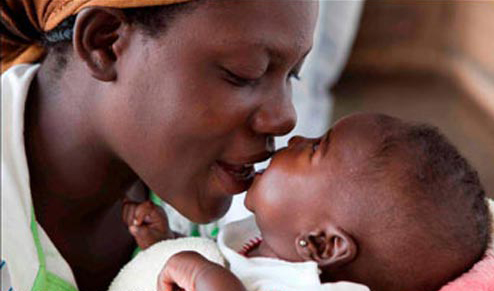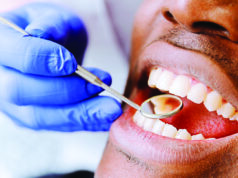Birth defects also known as congenital anomalies, congenital disorders or congenital malformations in medical terms, can be defined as structural or functional abnormalities that occur during intrauterine (womb) life and can be identified prenatally (before birth), at birth, or sometimes may only be detected later in infancy, such as hearing defects.
Congenital = existence at or before birth
America’s Centers for Disease control approximates that 1 out of 33 babies in the United States is born with a birth defect,
Whereas World health organization estimates that 303 000 newborns die within 4 weeks of birth every year, worldwide, due to birth defects. This forms the fifth leading cause of neonatal deaths world over.
Birth defects can be minor or severe. They may affect appearance, organ function, or physical or mental development. Most birth defects are present within the first three months of pregnancy, when the organs are still forming. Some birth defects are harmless, while others require long-term medical treatment. Severe birth defects lead to death in most cases especially in the first few days following birth.
What are the causes/risk factors of developing birth defects?
All pregnant women have some risk of delivering a child with a birth defect.
Although approximately 50% of all congenital anomalies cannot be linked to a specific cause, there are some known genetic, environmental and other causes or risk factors.
Risk increases under any of the following conditions:
- family history of birth defects or other genetic disorders
- Drug use, alcohol consumption, or smoking, radiation during pregnancy especially during the first trimester (First three months of pregnancy).
- advanced maternal age of 35 years or older
- inadequate prenatal care (ANC)
- untreated viral or bacterial infections, including sexually transmitted infections, some of these infections include syphilis, rubella, the Zika virus recently discovered in Brazil
- use of certain high risk medications such as lithium(drug used in treatment of some psychiatric patients with mood problems)
- Women with pre-existing medical conditions, such as diabetes, are also at a higher risk for having a child with a birth defect
- Low-income may be an indirect determinant of congenital anomalies, with a higher frequency among resource constrained families and countries. It is estimated that about 94% of severe congenital anomalies occur in low- and middle income countries
- Working or living near, or in, waste sites, smelters or mines may also be a risk factor, particularly if the mother is exposed to other environmental risk factors or nutritional deficiencies.
- Consanguinity (when parents are related by blood) also increases the prevalence of rare genetic congenital anomalies and nearly doubles the risk for neonatal and childhood death, intellectual disability and other anomalies. Common birth defects; There are more than 4000 types of known birth defects. They’re typically classified as structural or functional/ developmental. Structural defects are when a specific body part is missing or malformed. The most common structural defects are:
- heart defects
- Cleft lip or palate (when there’s an opening or split in the lip or roof of the mouth)
- Spina bifida (when the spinal cord doesn’t develop properly)
- Clubfoot (when the foot points inward instead of forward) Functional or developmental birth defects cause a body part or system to not work properly. These often cause disabilities of intelligence or development. Functional or developmental birth defects include metabolic defects, sensory problems, and nervous system problems. Metabolic defects cause problems with the baby’s body chemistry. The most common types of functional or developmental birth defects include:
- Down syndrome (causes delay in physical and mental development)
- Sickle cell disease (when the red blood cells become misshapen)
- Cystic fibrosis (damages the lungs and digestive system)
- How Are Birth Defects Diagnosed?
- Many birth defects can be diagnosed during pregnancy, depending on the particular type of birth defect. Prenatal ultrasounds can be used to diagnose certain birth defects in utero.
- More in-depth screening options, such as blood tests and amniocentesis (taking a sample of the amniotic fluid), may also be done. These tests are usually offered to women who have higher risk pregnancies due to family history, advanced maternal age, or other known factors.
- Prenatal tests can help determine whether the mother has an infection or other condition that’s harmful to the baby.
- A physical examination and hearing test may also be used to diagnose birth defects after the baby is born.
- A blood test called the newborn screen can help diagnose some birth defects shortly after birth, before symptoms occur.
How Are Birth Defects Treated?
Treatment options vary depending on the condition and level of severity. Some birth defects can be corrected before or shortly after birth. Other defects, however, may affect a child for the rest of their life. Severe birth defects, such as cerebral palsy or spina bifida, can cause long-term disability or death. Mild defects can be stressful, but they don’t typically affect overall quality of life. Speak with your doctor about the appropriate treatment for your child’s condition.
Medication
Medications may be used to treat some birth defects or to lower the risk of complications from certain defects. In some cases, medication may be prescribed to the mother to help correct an abnormality before birth.
Surgery
Surgery can be done to fix certain defects or ease harmful symptoms. Some people with physical birth defects, such as cleft lip, may undergo plastic surgery for either health or cosmetic benefits. Many babies with heart defects will need surgery.
Home Care
Parents may be instructed to follow specific instructions for feeding, bathing, and monitoring an infant with a birth defect.
Prevention;
Preventive public health measures work to decrease the frequency of certain congenital anomalies through the removal of risk factors or the reinforcement of protective factors. Important interventions and efforts include:
- ensuring adolescent girls and mothers have a healthy diet including a wide variety of vegetables and fruit, and maintain a healthy weight;
- ensuring an adequate dietary intake of vitamins and minerals, and particularly folic acid in adolescent girls and mothers;
- ensuring mothers avoid harmful substances, particularly alcohol and tobacco;
- avoidance of travel by pregnant women (and sometimes women of child-bearing age) to regions experiencing outbreaks of infections known to be associated with congenital anomalies;
- reducing or eliminating environmental exposure to hazardous substances (such as heavy metals e.g lead and mercury or pesticides) during pregnancy;
- controlling diabetes prior to and during pregnancy through counselling, weight management, diet and administration of insulin when required;
- ensuring that any exposure of pregnant women to medications or medical radiation (such as imaging rays) is justified and based on careful health risk–benefit analysis;
- vaccination, especially against the rubella virus, for children and women;
- increasing and strengthening education of health staff and others involved in promoting prevention of congenital anomalies;
- Screening for infections, especially rubella, varicella, and syphilis, and consideration of treatment.
Genetic counseling
A genetic counselor can advise couples with family histories of or other risks factors for birth defects. A counselor may be helpful when you’re thinking about having children or already expecting. Genetic counsellors can determine the likelihood that your baby will be born with defects by evaluating family history and medical records. They may also order tests to analyze the genes of the mother, father, and baby.






















